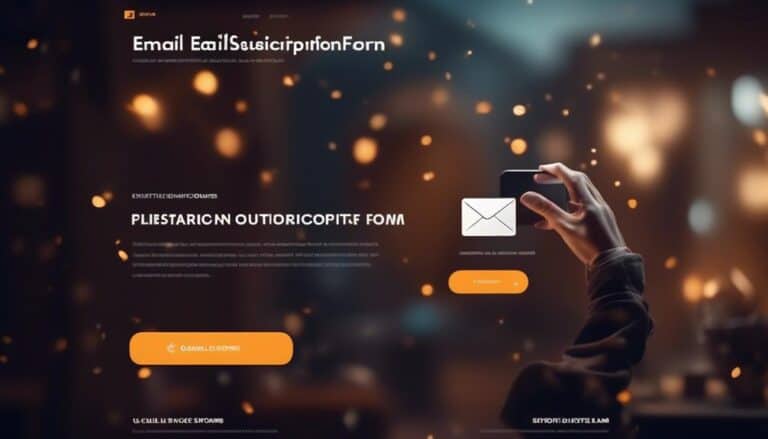Exclusive Insights: Advanced Segmentation Strategies to Outsmart Your Competition
By sheer coincidence, you have stumbled upon exclusive insights that will give you the upper hand in outsmarting your competition.
In this discussion, we will explore advanced segmentation strategies that will revolutionize your approach to targeting customers. From understanding the intricate workings of consumer psyche to harnessing the power of technology preferences, we will delve into a range of techniques that will transform the way you reach and engage with your target audience.
Stay tuned to discover the key to unlocking your competitive advantage.
Key Takeaways
- Advanced segmentation strategies enable businesses to gain valuable insights for targeted marketing campaigns and make informed decisions.
- Psychographic segmentation helps businesses understand consumer behavior on a deeper level and tailor marketing strategies based on consumer psyche.
- Behavioral segmentation utilizes data-driven techniques to identify trends and preferences, optimize online presence, and refine marketing strategies.
- Geographical segmentation allows businesses to customize marketing efforts based on specific locations, leveraging regional preferences and cultural differences.
The Importance of Advanced Segmentation

Advanced segmentation is a critical component in strategic decision-making, enabling businesses to analyze data and gain valuable insights for targeted and effective marketing campaigns. By analyzing market trends and utilizing customer segmentation strategies, businesses can identify specific consumer groups, understand their behaviors, and tailor their marketing efforts accordingly.
In today's fast-paced and highly competitive business landscape, understanding your target audience is more crucial than ever. Advanced segmentation allows you to go beyond basic demographics and delve deeper into the psychographics, preferences, and buying habits of your customers. This data-driven approach provides you with a comprehensive understanding of your market, enabling you to identify emerging trends, predict future behaviors, and make informed decisions.
With advanced segmentation, you can identify niche markets and create personalized marketing campaigns that resonate with specific customer segments. By targeting the right audience with the right message at the right time, you can maximize your marketing ROI and drive customer engagement and loyalty.
Furthermore, advanced segmentation empowers you to optimize your marketing strategies by identifying the most profitable customer segments. By focusing your resources on high-value customers, you can allocate your budget more efficiently and effectively, ensuring that your marketing efforts generate the desired results.
Innovation-driven businesses understand the importance of advanced segmentation in gaining a competitive edge. By leveraging data and employing customer segmentation strategies, they can uncover valuable insights, optimize their marketing efforts, and stay ahead of the curve.
Psychographic Segmentation: Understanding Consumer Psyche
To effectively understand and target consumers, it's crucial to analyze their motivations and preferences, as well as their lifestyle and personality traits. By delving into these psychographic factors, you can gain valuable insights into what drives their purchasing decisions and tailor your marketing strategies accordingly.
Additionally, identifying and targeting emotional triggers can further enhance your ability to connect with consumers on a deeper level, ultimately leading to increased customer satisfaction and loyalty.
Consumer Motivations and Preferences
What drives consumers' motivations and preferences? Understanding consumer behavior is crucial for businesses to develop effective marketing strategies. By conducting market research, companies can gain valuable insights into the factors that influence consumer decisions. Psychographic segmentation, which focuses on understanding consumer psyche, provides deeper insights into consumers' motivations and preferences. This allows businesses to tailor their products, messaging, and customer experiences to meet the specific needs and desires of their target audience. To illustrate this point, consider the following table:
| Motivation | Preference |
|---|---|
| Convenience | Online shopping |
| Status | Luxury brands |
| Health and wellness | Organic and natural products |
| Social responsibility | Sustainable and eco-friendly options |
Lifestyle and Personality Traits
Understanding consumers' lifestyle and personality traits is essential for effective psychographic segmentation. This enables businesses to tailor their marketing strategies to meet the specific needs and desires of their target audience.
Lifestyle trends play a crucial role in shaping consumer preferences and behaviors. By analyzing these trends, businesses can identify opportunities to position their products and services in a way that aligns with the consumer's lifestyle choices.
Personality-based marketing takes this a step further by considering the psychological characteristics of individuals. By understanding personality traits, businesses can create targeted messages and campaigns that resonate with their audience on a deeper level.
This approach allows for a more personalized and engaging customer experience, leading to increased brand loyalty and customer satisfaction.
Incorporating lifestyle and personality traits into segmentation strategies provides businesses with a competitive edge. It enables them to foster meaningful connections with their customers and drive innovation in their marketing efforts.
Targeting Emotional Triggers
By targeting emotional triggers in psychographic segmentation, businesses can tap into the deep-rooted desires and motivations of their target audience, allowing for more impactful and persuasive marketing strategies.
Emotional triggers in advertising play a crucial role in influencing consumer behavior. Understanding these triggers can help businesses create effective messaging strategies that resonate with their audience on a deeper level.
Research shows that emotions such as happiness, fear, and nostalgia can significantly impact consumer decision-making. Leveraging these emotions in marketing campaigns can elicit strong emotional responses, leading to increased brand loyalty and higher conversion rates.
To effectively target emotional triggers, businesses need to conduct extensive market research to identify the specific emotions that resonate with their target audience. Utilizing this knowledge, businesses can develop messaging strategies that connect with consumers on an emotional level, creating a powerful and lasting impact.
Behavioral Segmentation: Analyzing Consumer Actions
To effectively analyze consumer actions, employ advanced segmentation strategies that utilize data-driven, analytical techniques. Behavioral segmentation allows you to gain valuable insights into your customers' actions and preferences, enabling you to tailor your marketing efforts and deliver personalized experiences.
Here are five key methods to help you analyze consumer behavior:
- Analyzing Purchase Behavior: By studying your customers' purchase patterns, you can identify trends and preferences, allowing you to optimize your product offerings and promotions.
- Tracking Online Activity: Monitoring how customers interact with your website and online platforms can provide valuable information on their interests and preferences, helping you optimize your online presence and digital marketing strategies.
- Studying Clickstream Data: Analyzing the sequence of online clicks and navigation patterns can reveal customer preferences, allowing you to create targeted marketing campaigns and personalized recommendations.
- Monitoring Social Media Engagement: Tracking consumer interactions on social media platforms can provide insights into their preferences, opinions, and sentiment towards your brand, helping you refine your social media marketing strategies.
- Conducting Surveys and Feedback Analysis: Gathering feedback through surveys and analyzing customer responses can provide valuable insights into their preferences, satisfaction levels, and areas for improvement, allowing you to enhance your products and services.
Geographical Segmentation: Targeting Specific Locations

Targeting specific locations is a crucial aspect of geographical segmentation, allowing businesses to tailor their marketing strategies to the unique characteristics and preferences of different geographic regions. Location-based targeting enables businesses to deliver personalized messages and offers to consumers based on their geographical location. By understanding the demographics, behaviors, and preferences of consumers in specific regions, businesses can develop targeted marketing campaigns that resonate with their target audience.
Regional marketing plays a significant role in driving customer engagement and loyalty. By focusing on specific locations, businesses can create localized campaigns that speak directly to the needs and interests of consumers in those areas. This approach not only helps businesses stand out from their competition but also enhances the overall customer experience.
With the advancements in technology, businesses have access to vast amounts of data that can be used to analyze consumer behavior and preferences in different regions. This data-driven approach allows businesses to identify trends and patterns, enabling them to make informed decisions when developing their marketing strategies.
Innovation is key in today's competitive business landscape. Businesses that embrace location-based targeting and regional marketing have a unique opportunity to differentiate themselves and capture the attention of their target audience. By understanding the specific needs and preferences of consumers in different locations, businesses can create innovative marketing campaigns that drive results and help them outsmart their competition.
Demographic Segmentation: Identifying Key Customer Characteristics
Demographic segmentation involves analyzing key customer characteristics to inform strategic marketing decisions. By identifying customer preferences and targeting consumer behavior, businesses can better understand their target audience and tailor their marketing efforts accordingly.
Here are five important factors to consider when conducting demographic segmentation:
- Age: Understanding the age range of your target customers can help you design products and marketing campaigns that resonate with their specific needs and preferences.
- Gender: Recognizing the gender composition of your customer base allows you to create targeted messaging and promotional strategies that appeal to different genders.
- Income level: Knowing the income levels of your customers helps determine pricing strategies and product positioning, ensuring your offerings are accessible and affordable to your target market.
- Education: Consider the education levels of your customers to design marketing materials and communication that align with their level of knowledge and understanding.
- Family status: Understanding whether your customers are single, married, or have children can help you tailor your products and services to their unique needs and lifestyles.
Technographic Segmentation: Leveraging Technology Preferences

Leveraging customers' technology preferences through technographic segmentation can provide businesses with valuable insights for strategic marketing decisions. Understanding how customers adopt and use technology is crucial in today's digital age. Technographic segmentation involves analyzing customers based on their technology adoption and usage patterns. By examining factors such as the types of devices they use, the software they prefer, and their online behavior, businesses can gain a deeper understanding of their target audience.
This segmentation strategy allows businesses to tailor their marketing efforts to specific customer segments. For example, if a competitor analysis reveals that a significant portion of your target audience prefers mobile devices over desktops, you can optimize your website and marketing campaigns for mobile platforms. Additionally, technographic segmentation can help identify opportunities for innovation and product development. By uncovering the technology preferences of different customer segments, businesses can develop new products or features that cater to their specific needs and preferences.
Incorporating technographic segmentation into your marketing strategy can give you a competitive edge by allowing you to personalize your messaging, optimize customer experiences, and stay ahead of market trends. By analyzing technology preferences, you can better understand your customers and deliver targeted, innovative solutions that meet their unique needs.
Advanced Segmentation Tools and Techniques
To enhance your segmentation efforts and gain deeper insights into your target audience, employing advanced tools and techniques is essential. In today's fast-paced and competitive business landscape, relying on basic segmentation methods simply won't cut it. To stay ahead, you need to leverage advanced segmentation strategies and techniques that can provide you with a competitive edge.
Here are five cutting-edge tools and techniques you should consider incorporating into your segmentation approach:
- Predictive analytics: Utilize advanced data analysis techniques to predict customer behavior and preferences, allowing you to tailor your marketing efforts accordingly.
- Machine learning algorithms: Harness the power of artificial intelligence to automatically segment your audience based on complex patterns and characteristics, enabling you to personalize your messaging at scale.
- Social media listening: Monitor and analyze social media conversations to understand the sentiments, interests, and behaviors of your target audience, helping you fine-tune your segmentation approach.
- Customer journey mapping: Map out the entire customer journey, from awareness to purchase and beyond, to identify key touchpoints and optimize your segmentation strategy at each stage.
- Geospatial analysis: Leverage location data to segment your audience based on their geographical location, enabling you to deliver hyper-localized marketing campaigns.
Frequently Asked Questions
How Can Advanced Segmentation Help Businesses Gain a Competitive Advantage?
Advanced segmentation can help you gain a competitive advantage by allowing you to target specific customer segments with tailored marketing strategies. This leads to higher customer satisfaction, increased brand loyalty, and ultimately, a stronger competitive differentiation in the market.
What Are Some Common Challenges Businesses Face When Implementing Advanced Segmentation Strategies?
When implementing advanced segmentation strategies, businesses often face challenges with data privacy and implementation. However, overcoming these obstacles can lead to a competitive advantage by allowing for more targeted marketing and personalized customer experiences.
Are There Any Ethical Considerations to Keep in Mind When Utilizing Advanced Segmentation Techniques?
When utilizing advanced segmentation techniques, it's crucial to consider the ethical implications and privacy concerns. By prioritizing data privacy and ensuring transparency, you can maintain the trust and loyalty of your customers while driving innovation and outsmarting your competition.
How Can Businesses Effectively Combine Different Segmentation Strategies to Create More Targeted Marketing Campaigns?
To maximize the effectiveness of your marketing campaigns, businesses must strategically combine different segmentation strategies. By analyzing data and identifying patterns, you can create targeted campaigns that resonate with your audience and outsmart your competition.
What Are Some Potential Risks or Limitations Associated With Relying Solely on Advanced Segmentation for Customer Targeting?
Relying solely on advanced segmentation for customer targeting presents risks and limitations. Potential issues include the exclusion of valuable customers, overreliance on data, and ethical concerns. It is important to consider these downsides and challenges to ensure effective and ethical marketing strategies.
Conclusion
In conclusion, employing advanced segmentation strategies is crucial for businesses aiming to gain a competitive edge.
By understanding the consumer psyche through psychographic segmentation, analyzing consumer actions through behavioral segmentation, targeting specific locations through geographical segmentation, identifying key customer characteristics through demographic segmentation, and leveraging technology preferences through technographic segmentation, businesses can effectively tailor their marketing efforts.
Utilizing advanced segmentation tools and techniques allows businesses to make data-driven, analytical, and strategic decisions, ultimately outsmarting their competition and driving success.








